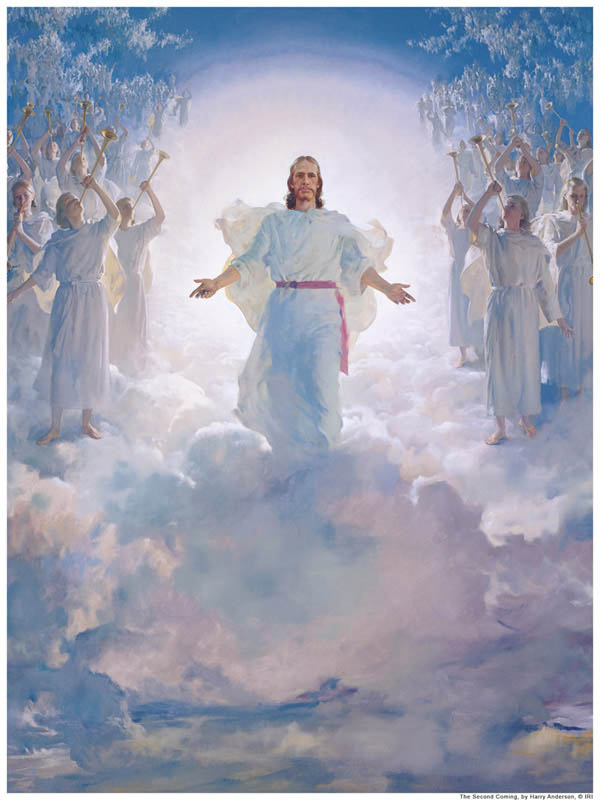Every year, Mormons meet for a worship service on Easter that celebrates the life of the Savior and honors His atonement and his voluntary death on the cross. From the 18 month old in the toddler nursery who is learning that because Jesus was resurrected, we all will be resurrected, to the adults in Sunday School, Mormons remember what the Savior’s life and death meant for their own lives and deaths.
 Of course, the Easter service is just one of many services and classes taught about the atonement of Jesus Christ. Mormon theology is focused on that subject and it is taught and remembered throughout the year, not just on one day of the year. At Christmas, Mormons are reminded that Christmas is celebrated because there is an Easter. Throughout the year, the taking of the Sacrament (communion) is a weekly reminder of the atonement and a time when Mormons are invited to reflect on that gift to them and how they can demonstrate their love for the Savior’s offering. Lessons and talks (sermons) frequently focus on the ministry of Jesus Christ and His atonement.
Of course, the Easter service is just one of many services and classes taught about the atonement of Jesus Christ. Mormon theology is focused on that subject and it is taught and remembered throughout the year, not just on one day of the year. At Christmas, Mormons are reminded that Christmas is celebrated because there is an Easter. Throughout the year, the taking of the Sacrament (communion) is a weekly reminder of the atonement and a time when Mormons are invited to reflect on that gift to them and how they can demonstrate their love for the Savior’s offering. Lessons and talks (sermons) frequently focus on the ministry of Jesus Christ and His atonement.
It can be instructive to learn what Mormons are taught about the message of Easter, not just in the spring, but all year long. Mormons place all their lesson manuals on the Internet, where they can be accessed by anyone at no cost and without registration. Many of these lesson manuals contain lessons about the atonement.
Adults who are learning about the Mormons by attending their meetings and new Mormons attend a special Sunday School class. This course, which uses the Gospel Principles manual, helps newcomers learn the basics of the religion and prepares them for higher learning. Chapter 12 of this manual is about the atonement of Jesus Christ.
During this lesson, students learn that the atonement was necessary for our salvation. They are taught that at the Fall of Adam, two types of death were made possible. One is the physical death, and the other is separation from God, which is a spiritual death. The only way both types of death could be overcome was through the atonement. God provided for that atonement out of love for us and Jesus Christ volunteered to carry it out, asking for nothing in return. They learn that only Jesus Christ could atone for us since He was the only perfect being, was God’s only begotten Son, and had been chosen by God for this mission.
The manual teaches students about the Garden of Gethsemane, a part of the atonement many religions consider less important than the cross, despite the overwhelming pain and suffering the Savior underwent in the Garden. There He took on our sins in a process so painful he bled from every pore. He didn’t do this as a group sacrifice, but took on each individual sin for every person, making it a very personal proxy ordinance done on our behalf. Later, he died on the cross in a painful manner, again voluntarily, since no one could have forced Him to die.
The remainder of the lesson focuses on the results of the atonement, which gave everyone rescue from physical death. However, each person must choose to activate the atonement’s full measure—rescue from spiritual death—by accepting Jesus Christ as his Savior and demonstrating our faith in Him. We do this by repenting of our sins, getting baptized (which Mormons can do at the age of eight), receiving the Holy Ghost, and keeping the commandments. Jesus taught that it was not enough to say we loved and accepted Him. We must also do what He commanded us to do:
Not every one that saith unto me, Lord, Lord, shall enter into the kingdom of heaven; but he that doeth the will of my Father which is in heaven (Matthew 7:21).
Our obedience to the commandments of God are a measure of our faith and our love. If we keep them without faith and love, without treating them as an offering to God, they are of no value. However, if we keep them purely out of love, they demonstrate to God that our words have weight and value.
Let’s look at one additional manual. The 8-11 year olds, like the teenagers and adults, have a four-year course of study in which they learn the Mormon scriptures. Two of these years are focused on the Bible and one of the Bible years, of course, is on the New Testament. While the children do not have a special Easter lesson, the New Testament manual for Mormon children has many lessons on the life of Jesus Christ. The linked manual is the teacher’s manual, since the children do not receive manuals of their own. Lesson 30 teaches the atonement in the Garden of Gethsemane and 32 discusses Jesus’ death on the cross. The following lesson teaches the resurrection. In lesson 32, which teaches about Jesus’ death and burial, the children are directed to study Matthew 27:32–66, Luke 23:26–56, and John 10:17–18, 19:13–42, all of which are found in the Bible.
The children are reminded of what they know about Adam and Eve and the way death came into the world. They are asked what happens when a person dies and whether or not we could reunite the spirit and the body ourselves. We cannot. They learn that Jesus made it possible for this to happen and they discuss why He was the only person who could have carried out the atonement. As children read the assigned scriptures, they are asked to explain what the verses teach them about Jesus Christ. This is important, because who He is has much to do with why He is our Savior. As they read how the Pharisees asked Pilate to make sure no one could steal Jesus’ body and claim it had been resurrected, they come to understand the power of the Lord is greater than any power of man.
Mormons do not confine their study of the atonement of Jesus Christ to an annual holiday. They understand this moment in time made it possible for them to return home to God and Jesus Christ and to live a life filled with hope and joy, regardless of the challenges mortality might bring. Every day is a celebration of Easter in Mormonism.
The Mormons have been releasing a series of videos on the life of Jesus Christ. Please take a moment to respectfully watch this video, which portrays the scourging and crucifixion of Jesus Christ.
About Terrie Lynn Bittner
The late Terrie Lynn Bittner—beloved wife, mother, grandmother, and friend—was the author of two homeschooling books and numerous articles, including several that appeared in Latter-day Saint magazines. She became a member of the Church at the age of 17 and began sharing her faith online in 1992.







I like the painting that you used in this article. At the bottom right hand corner is the credit for the painting giving the artist name of Harry Anderson. Wikipedia says that the full name is Joseph Harry Anderson and he was a devout “Seventh-day Adventist artist” and is best known for his “Christian-themed illustrations” He painted for the Adventist church and The Church of Jesus Christ of Latter-day Saints. He died November 19, 1996.
Thank you for your clarification.